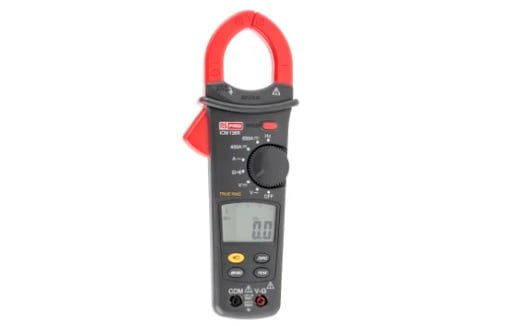“👨🔧Uncover the best DC Clamp Meters with our guide. Learn how to select & use this essential electrical tool for precision and safety ⚡ ✔️”
In the realm of electrical engineering and maintenance, precision and safety are paramount. Among the myriad of tools available to professionals in this field, the DC clamp meter stands out as an indispensable device. This versatile instrument, also known as a current clamp or tong tester, has revolutionized how we measure and diagnose electrical systems. This essay delves into the functionalities, advantages, and applications of DC clamp meters, underscoring their significance in modern electrical work. Click the link for more information: https://ph.rs-online.com/web/c/test-measurement/electrical-test-measurement/clamp-meters/
Understanding the DC Clamp Meter
A DC clamp meter is a handheld device used to measure direct current (DC) flowing through a conductor without the need to disconnect the circuit. Unlike traditional multimeters that require direct contact with the electrical components, clamp meters use jaws that clamp around the conductor. These jaws sense the magnetic field generated by the current flow, which is then converted into a readable value. This method of measurement offers several advantages, particularly in terms of safety and convenience.
Key Features and Advantages
One of the most notable features of the DC clamp meter is its non-intrusive nature. By eliminating the need to physically connect the meter to the circuit, users can measure current in a live wire without interrupting the circuit or risking electrical shock. This is especially beneficial in industrial settings where downtime can be costly, and safety is a priority.
Accuracy and range are other critical aspects where DC clamp meters excel. These devices are designed to measure a wide range of current values, from milliamps to thousands of amps, with high precision. This makes them suitable for a variety of applications, from small electronics repairs to large-scale industrial maintenance.
Additionally, modern DC clamp meters come equipped with a host of advanced features. Many models include digital displays with backlighting, making it easier to read measurements in low-light conditions. Some also offer data logging capabilities, allowing users to record and analyze current over time. This can be particularly useful for diagnosing intermittent issues that are hard to detect with a single measurement.
Applications in Various Fields
The versatility of DC clamp meters makes them useful across multiple industries. In residential and commercial settings, electricians use them to troubleshoot wiring issues, ensuring that circuits are functioning correctly and safely. By measuring the current flowing through different parts of the system, they can identify overloads, short circuits, and other potential problems.
In industrial environments, DC clamp meters are indispensable for maintaining and monitoring machinery. Motors, generators, and other heavy equipment often draw significant amounts of current, and accurate measurement is crucial for preventing overloading and ensuring efficient operation. Maintenance technicians use clamp meters to perform regular checks, ensuring that all components are operating within their specified current ranges.
DC clamp meters are also valuable in the automotive industry. Modern vehicles are equipped with a plethora of electronic systems, from engine control units to infotainment systems. Technicians use clamp meters to diagnose electrical issues, measure current draw, and ensure that all components are functioning correctly. This helps in preventing battery drain and identifying faulty components that could lead to more significant problems.
Enhancing Safety and Efficiency
Safety is a critical concern in electrical work, and DC clamp meters play a significant role in enhancing it. By allowing non-contact current measurement, they reduce the risk of electric shock and arc flash incidents. This is particularly important in high-voltage environments where direct contact with live conductors can be extremely dangerous.
Moreover, the efficiency gained from using clamp meters cannot be overstated. Traditional methods of current measurement often require circuit interruption, which can lead to downtime and increased labor costs. Clamp meters streamline the process, allowing for quick and accurate measurements without the need for extensive disassembly. This not only saves time but also reduces the likelihood of errors that can occur when reconnecting components.
The Future of DC Clamp Meters
As technology continues to advance, the capabilities of DC clamp meters are likely to expand further. Integration with wireless technology, for instance, could allow for remote monitoring and real-time data transmission to mobile devices or cloud-based systems. This would enable technicians to track electrical parameters from a distance, improving safety and efficiency even further.
Artificial intelligence and machine learning algorithms could also play a role in enhancing the functionality of clamp meters. By analyzing historical data and identifying patterns, these tools could provide predictive maintenance insights, alerting users to potential issues before they become critical. This proactive approach could significantly reduce downtime and maintenance costs in industrial settings.
Conclusion
In conclusion, the DC clamp meter is a vital tool in the toolkit of any electrician or maintenance professional. Its non-intrusive, accurate, and versatile nature makes it indispensable for a wide range of applications, from residential wiring to industrial machinery maintenance. By enhancing safety, improving efficiency, and enabling precise measurements, DC clamp meters play a crucial role in ensuring the reliable operation of electrical systems. As technology evolves, we can expect these devices to become even more powerful and integral to modern electrical work.



